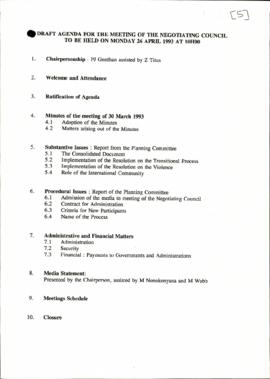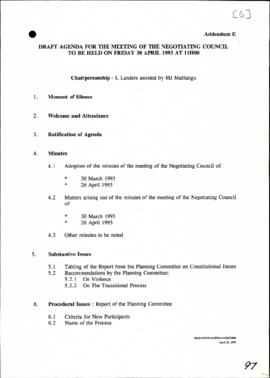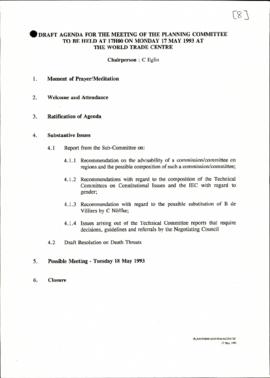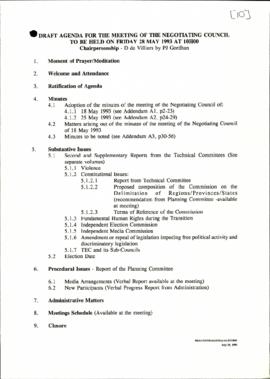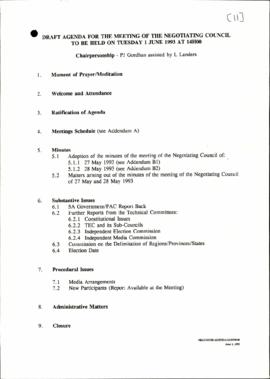Identity area
Reference code
Title
Date(s)
Level of description
Series
Extent and medium
Context area
Name of creator
Repository
Immediate source of acquisition or transfer
Content and structure area
Scope and content
This series contains the working documents of the Negotiating Council and the Facilitating Committee (as it was briefly known). It includes the minutes, delegation packs, reports and resolutions of the Negotiating Council. Additional proposals and submissions from other bodies of the Multi-Party Negotiation Process (MPNP) and resolutions from the Planning Conference can be found here.
The Negotiating Council was the core negotiating body of the MPNP and established the Transitional Executive Council (TEC) to serve as its successor. It was ultimately responsible for the negotiating, drafting, finalising and implementation of the Interim Constitution as endorsed by the MPNP Plenary. The Council reported to the Multi-Party Negotiating Forum.
Each participating party was represented in the Negotiating Council by two delegates, one of which was required to be a woman, plus two advisers. The Negotiating Council’s primary function was the day to day negotiations of the MPNP and processing reports from all other committees and sub-committees for review by the Negotiating Forum ahead of submission to the MPNP Plenary for approval.
The Negotiating Council established seven technical committees, commissions, task groups and various ad hoc and sub-committees to assist in its work. While these bodies reported to the Negotiating Council, the Planning Committee was responsible for their co-ordination and terms of reference.




